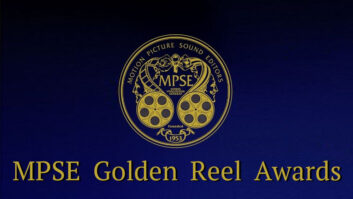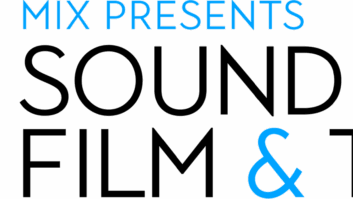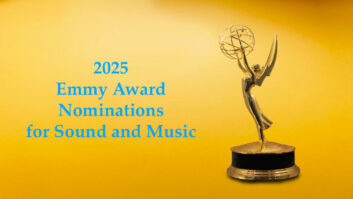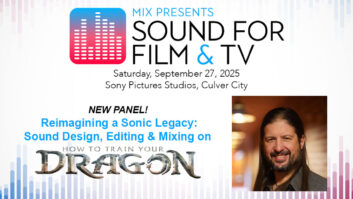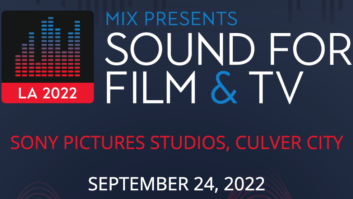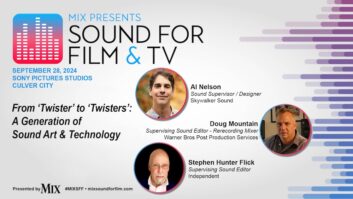About 10 years ago, in an interview with Mix, Oscar-winning film editor/sound designer/re-recording mixer Walter Murch described the relationship of sound to picture as one where “the visual material knocks on the front door, and when somebody knocks on the front door, you sort of adjust your clothing, go to the door, take a deep breath, say, ‘Who’s there?’ and open the door. Whatever meeting occurs will have an element of formality to it because it’s somebody who came to the front door. Sound tends to come in the back door, or sometimes even sneak in through the windows or through the floorboards.”
The interview appeared under the banner “Sound for Picture,” a section of our magazine that debuted in 1991, right around the time when 5.1 digital playback was emerging as a standard and digital audio workstations had begun taking over edit bays and dub stages. Video post houses were installing audio rooms, track counts were growing beyond the scale of even the largest-format consoles, and a fledgling market had just begun to emerge in audio for videogames. There was a mini-boom in applications and opportunities for audio professionals, especially composers and sound designers with an eye on the future.
And yet, despite all the technological advances and new audio playback formats, nothing much really changed in the process of putting sound to picture. Audio crews would come in at the end, often large crews handling re-conforming, and units were put up for playback against picture. Sound editorial remained largely a separate process from the picture edit, with effects, music and dialog debuting at the final mix and married to image. Sometimes it would be the first time music would be heard against effects.
Jump-cut to today and we are witness to another mini-explosion in sound for picture, fueled largely by a YouTube culture that buys Flip hi-def video recorders for less than $200 and consumes content online. It’s not just reruns of The Office, either; there are Webisodes, short films, homegrown music videos, clever mashups and live streaming from music festivals. They all have sound.
In fact, there’s more sound in more outlets than we’ve ever seen before. And the demand for rich media has created a demand for new tools, from production through distribution. On the low end, you have Apple’s iLife suite, where a seventh-grader can put together a project, with original music, and put it on the Web without opening a manual. On the high end, we are seeing the delivery of DAWs with 280 tracks, full-blown effects per channel and built-in high-def video recorder/players. We’re not saying that all video producers should be re-recording mixers, but the rules of production are definitely changing. Those pursuing a career in audio should, at the very least, be conversant in video. It’s unavoidable.
So perhaps Mr. Murch had it right all along. Inside the house, there is no Sound for Picture. Today, it’s Sound and Picture.
